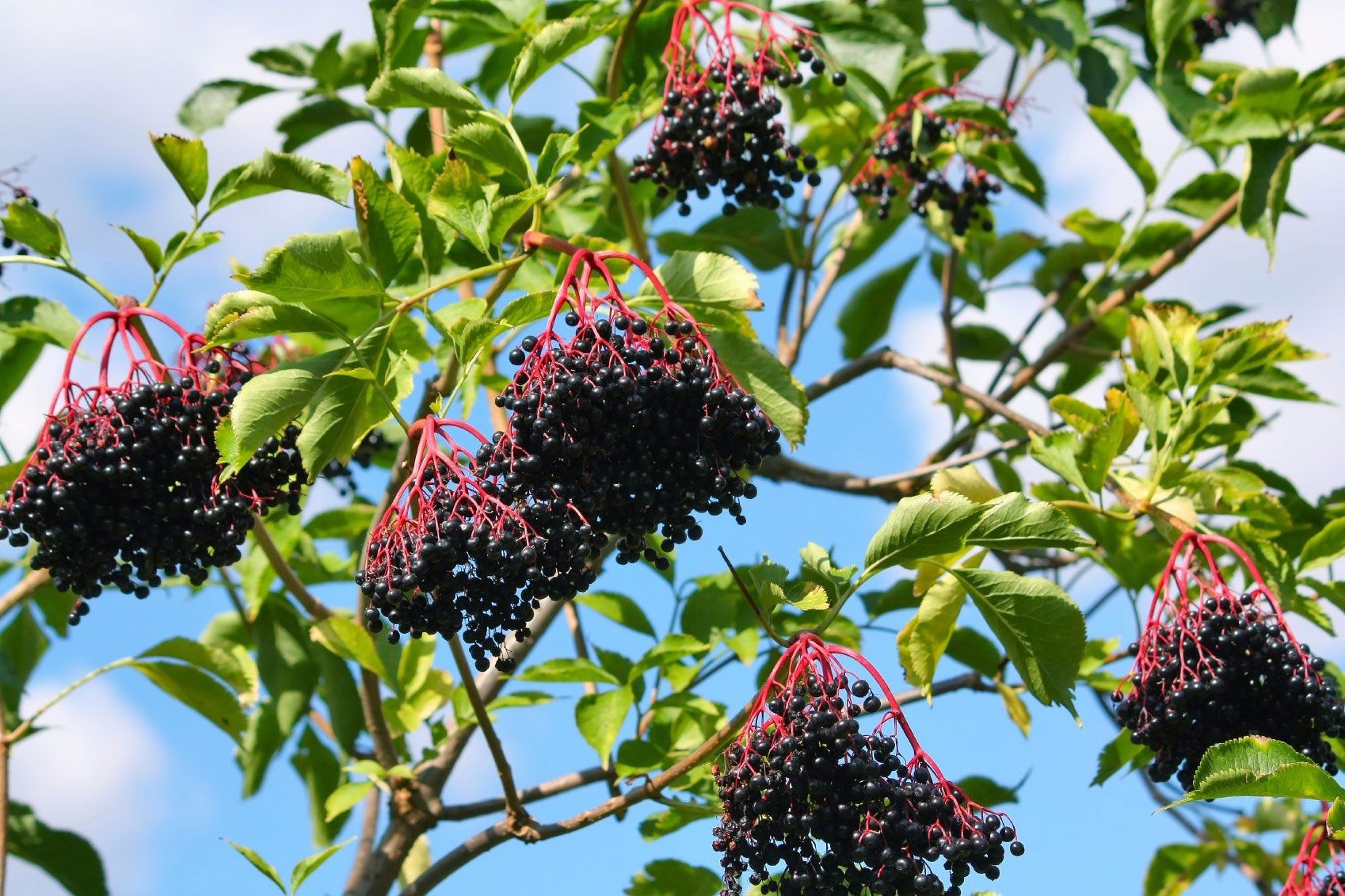Planting Elderberry - Care Of Elderberries

Elderberry (Sambucus) is a large bush or shrub that is native to the U.S. and Europe. The bush produces bluish-black fruit in bunches that are used in wines, juices, jellies, and jams. The berries themselves are quite bitter, so they are rarely eaten by themselves. Interested in growing your own elderberries? Read on for more information.
How to Grow Elderberry Plants
Growing elderberries is not all that difficult. They can tolerate different conditions like poor soil or overly wet areas. One thing growing elderberries cannot tolerate, however, is drought.
When planting elderberry bushes, you should note that the berries will grow on the bushes the first year you plant them. Just remember that the berries will do better the second year.
Elderberry planting is done best in well-draining, loamy soil. Sandy soils should be improved by adding a few inches (5 to 10 cm.) of organic matter.
When elderberry planting, make sure to allow for cross-pollination. Therefore, two or more cultivars can be planted near each other. Plant them one meter apart (3 ft.) in rows that are four to five meters (13 to 16.5 ft.) apart.
Make sure you do your elderberry planting early in the spring. After planting, be sure to water them so they get a good start.
Care of Elderberries
After you have done your elderberry planting, you should weed once in a while, but do so carefully. You do not want to disturb the roots. Use mulch where it is necessary to prevent weed growth, and pluck weeds that manage to sneak through.
Sign up for the Gardening Know How newsletter today and receive a free copy of our e-book "How to Grow Delicious Tomatoes".
When growing elderberries, remember that the bushes require about an inch or two (2.5 to 5 cm.) of water each week. Therefore, if summertime comes and you find that you are running into periods of no rain, be sure to water them often.
The first two years after planting elderberry bushes, you should let them grow wildly. Do not prune and do not bother picking the berries. After that, you can prune the elderberry bushes in early spring by cutting them back and removing all the dead areas. This way, the bushes will grow and produce a lot of berries for you.
Right around mid-August and mid-September, there is a 5- to 15-day ripening period. This is the time when you want to begin harvesting elderberries. Be sure to pick them before the birds do, and enjoy!